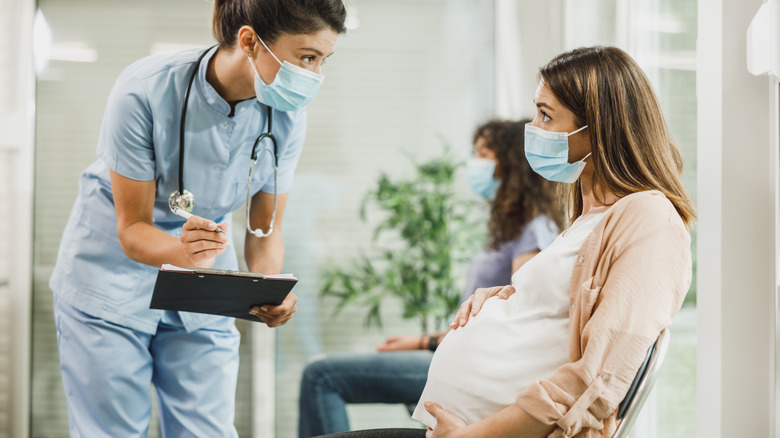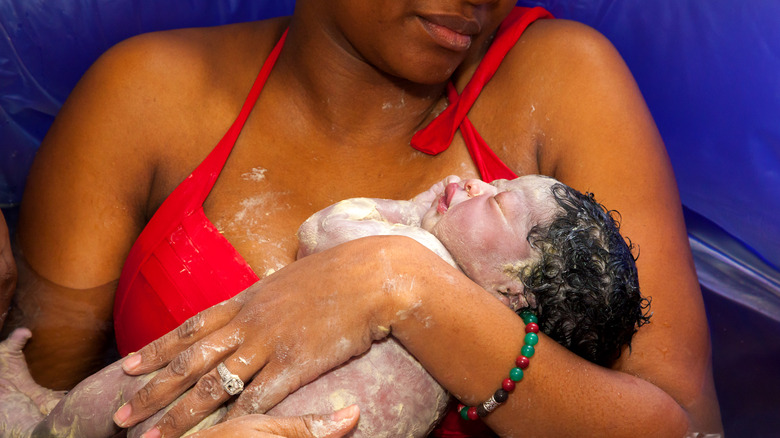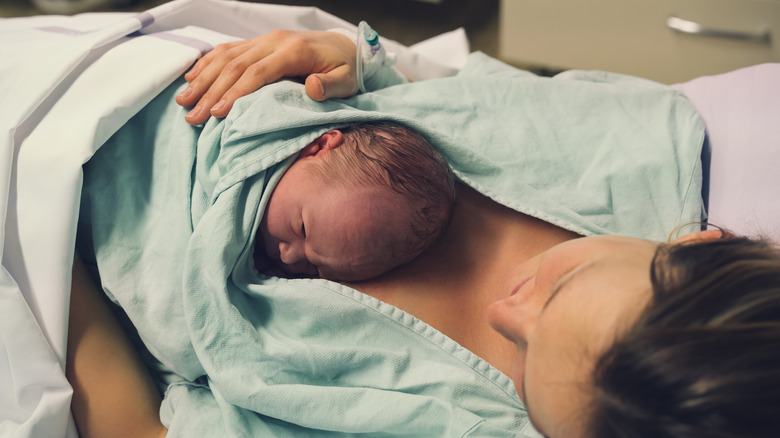The Biggest Drawbacks Of Giving Birth At Home
Most people don't think twice about where they will deliver their baby. They naturally assume they will go to the hospital and have all of their needs and their baby's needs attended to in a safe and healthy environment. However, for many, the COVID-19 pandemic changed all of that and caused many people to consider having home births.
Home births have been on the rise in recent years, especially since the COVID-19 pandemic. In 2019, there were 38,000 home births in the U.S. (via U.S. News & World Report). Once the pandemic hit in 2020, home births hit a high of 45,000 for that year, which was close to a 20% increase in just one year.
Surprisingly, even after most hospital restrictions surrounding COVID have decreased two years later, home births are still on the rise. In 2021, there was a 12% increase as compared to 2020 as 50,000 home births took place (via CNN).
Yet even with increasing numbers, planned home birth is still a risk.
Why people wanted more home births during COVID-19
Some of the reasons why home births greatly increased were simply because pregnant people were afraid of risking being in a hospital and contracting the virus, particularly when the death rates were so incredibly high at the beginning of the pandemic. However, even as the height of the pandemic lessened, hospitals placed restrictions on visitors, including could be in the delivery room (via Parents).
At times, even spouses were not allowed to witness the birth, so many people decided that giving birth at home would be best for all involved (via the NY Post). Others worried they might be separated from their babies if they tested positive for COVID, and still others were afraid of letting their newborns anywhere near a hospital where so many people were sick with the virus. Some simply didn't want to have to wear a mask during delivery.
Why some people still want home births
Even aside from COVID, many people don't want to give birth in a hospital for a multitude of varied factors. A big one is the presumed dissatisfaction with the care they would receive in a hospital (via Mayo Clinic).
"People seek home birth for many reasons, with or without a pandemic," certified nurse midwife, Risa Klein, who is also the director of midwifery at Lenox Hill Hospital in New York, told Healthline. She added that other reasons are a fear of hospitals, concerns about being separated from the baby, and the worry about having to undergo medical interventions. Some people also prioritize their emotional well-being and feel that a hospital wouldn't be good for them.
"Having less intervention, monitoring, drugs, and disturbances from well-intentioned staff, including nurses and residents, are also on the list," explained Klein. "Many people want to be heard, have privacy respected, or have their older siblings at the birth, and hospitals in their area may not allow children at birth."
There are serious risks in home births
Home births pose significant risks; the risk of infant death during home birth is 1-2 out of every 1,000 home births which is double the rate of hospital births (via WebMD).
When an emergency occurs in a hospital, there is life-saving equipment and the ability to perform an emergency cesarean section in a matter of minutes. However, delays occur when emergencies happen at home. The time it takes for an ambulance to get to the hospital may be too late. When the fetal heart rate drops during delivery, the baby is deprived of oxygen which can result in brain injury, cerebral palsy, or stillbirth (via Cleveland Clinic).
"The magnitude of risk associated with home delivery is alarming," Dr. Amos Grunebaum, chief of labor and delivery at NewYork-Presbyterian/Weill Cornell Medical Center wrote in a piece published on the Weill Cornell Medical College website. "Parents-to-be need to know that if they deliver at home, their baby has a greater risk of dying or having a serious neurological problem." Gruenbaum led a study that found an increased risk of stillbirth, neonatal seizures, and serious neurological dysfunction in infants during a home birth.
The official stance from the American College of Obstetricians & Gynecologists is that hospital birth is always the safer option: "Hospitals and birth centers that are both licensed and accredited remain safe places to give birth in the United States."



